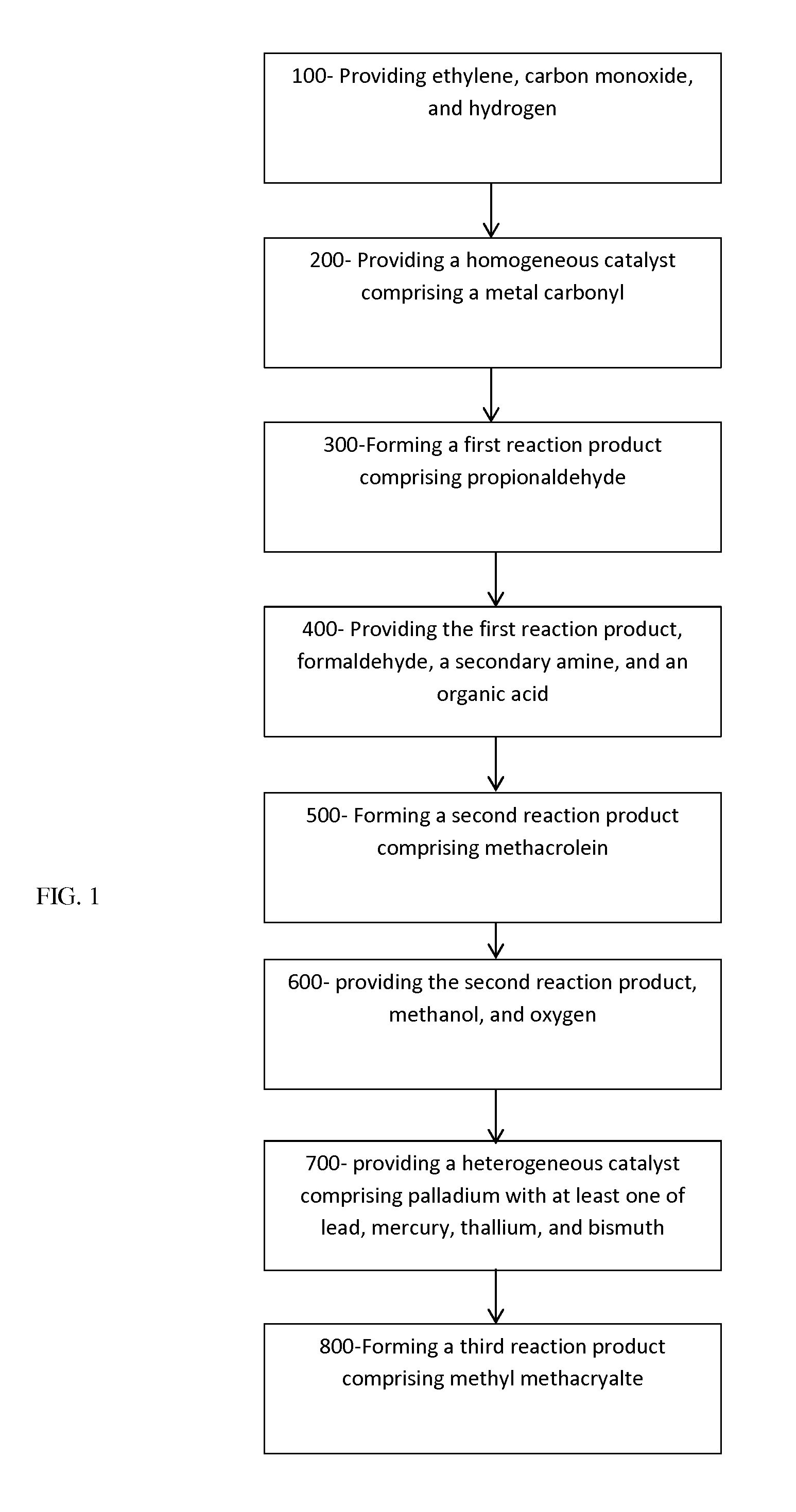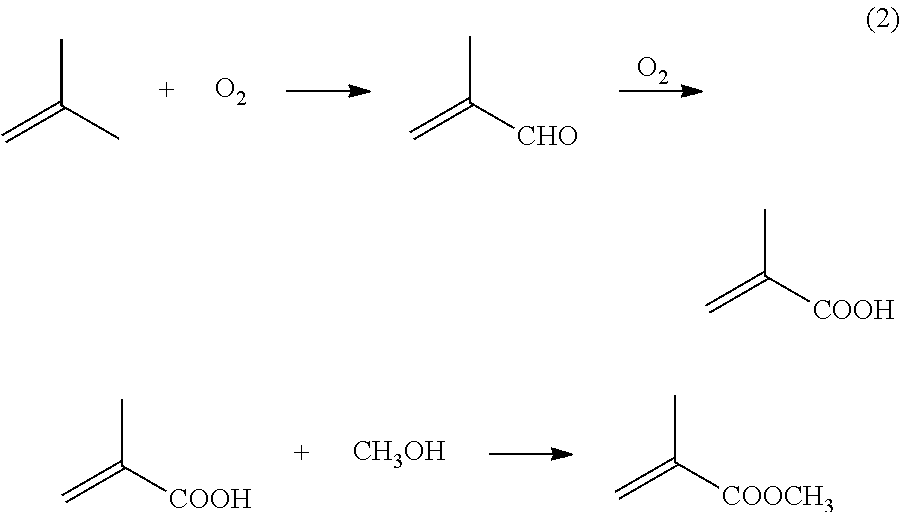Method for making methyl methacrylate from propionaldehyde and formaldehyde via oxidative esterification
- Summary
- Abstract
- Description
- Claims
- Application Information
AI Technical Summary
Benefits of technology
Problems solved by technology
Method used
Image
Examples
example 1
[0039]In one example, a rhodium catalyst can be prepared by dissolving 0.0588 grams (g) rhodium dicarbonyl saliclaldoximate in 10 milliliters (ml) of toluene, and then adding 0.0524 ml triphenyl phosphite. This reaction forms the complex salicylaldoximatocarbonyltriphenylphosphiterhodium in toluene.
[0040]A 1 ml portion of this catalyst complex solution can be put in an autoclave with 99 ml of additional toluene. After nitrogen purging, the autoclave is pressured to 550 pounds per square inch gauge (psig) with ethylene, then to 1200 psig with a 1:1 gas (a mixture of hydrogen and carbon monoxide). It is then heated to about 90° C. for 10 hours. As the pressure falls due to the reaction, additional 1:1 gas is added to maintain the pressure. After 10 hours, the autoclave is cooled and vented. Propionaldehyde is obtained at a selectivity of almost 99%, with the remainder being mostly diethyl ketone.
example 2
[0041]In one example, 104.4 g of propionaldehyde, 2 g of propionic acid, and 98 g of 30% aqueous formaldehyde are mixed in a vessel, with 5.8 g of di-n-butylamine added with cooling. Once the amine addition is completed, the reactor is heated to about 100° C. for about one hour. Upon cooling, the reaction mixture forms two phases, one organic and one aqueous. The organic phase contains over 90% methacrolein.
example 3
[0042]50.1 g of methacrolein is added to the reactor, along with 25.2 g of methanol (for a molar ratio of methanol:methacrolein of about 1.1). Roughly 1 g of catalyst (e.g., 3% palladium and 2% lead on silica) is added to the solution. A stirrer is turned on, and the solution is heated to about 50° C. Oxygen flow is begun at about 6 milliliters per minute (ml / min). The reactor is open to atmospheric pressure. The reaction is continued for about 4 hours. This results in methacrolein conversion of about 50%, with selectivity to methyl methacrylate of about 90%.
[0043]Set forth below are some embodiments of the method disclosed herein.
PUM
| Property | Measurement | Unit |
|---|---|---|
| Temperature | aaaaa | aaaaa |
| Temperature | aaaaa | aaaaa |
| Temperature | aaaaa | aaaaa |
Abstract
Description
Claims
Application Information
 Login to View More
Login to View More - R&D
- Intellectual Property
- Life Sciences
- Materials
- Tech Scout
- Unparalleled Data Quality
- Higher Quality Content
- 60% Fewer Hallucinations
Browse by: Latest US Patents, China's latest patents, Technical Efficacy Thesaurus, Application Domain, Technology Topic, Popular Technical Reports.
© 2025 PatSnap. All rights reserved.Legal|Privacy policy|Modern Slavery Act Transparency Statement|Sitemap|About US| Contact US: help@patsnap.com



